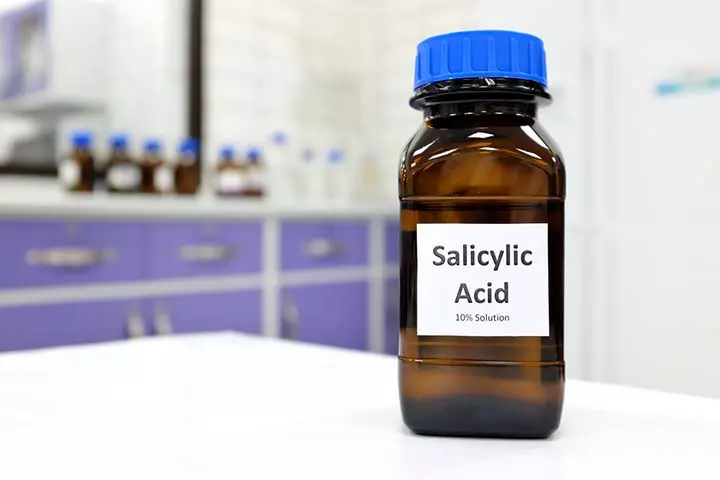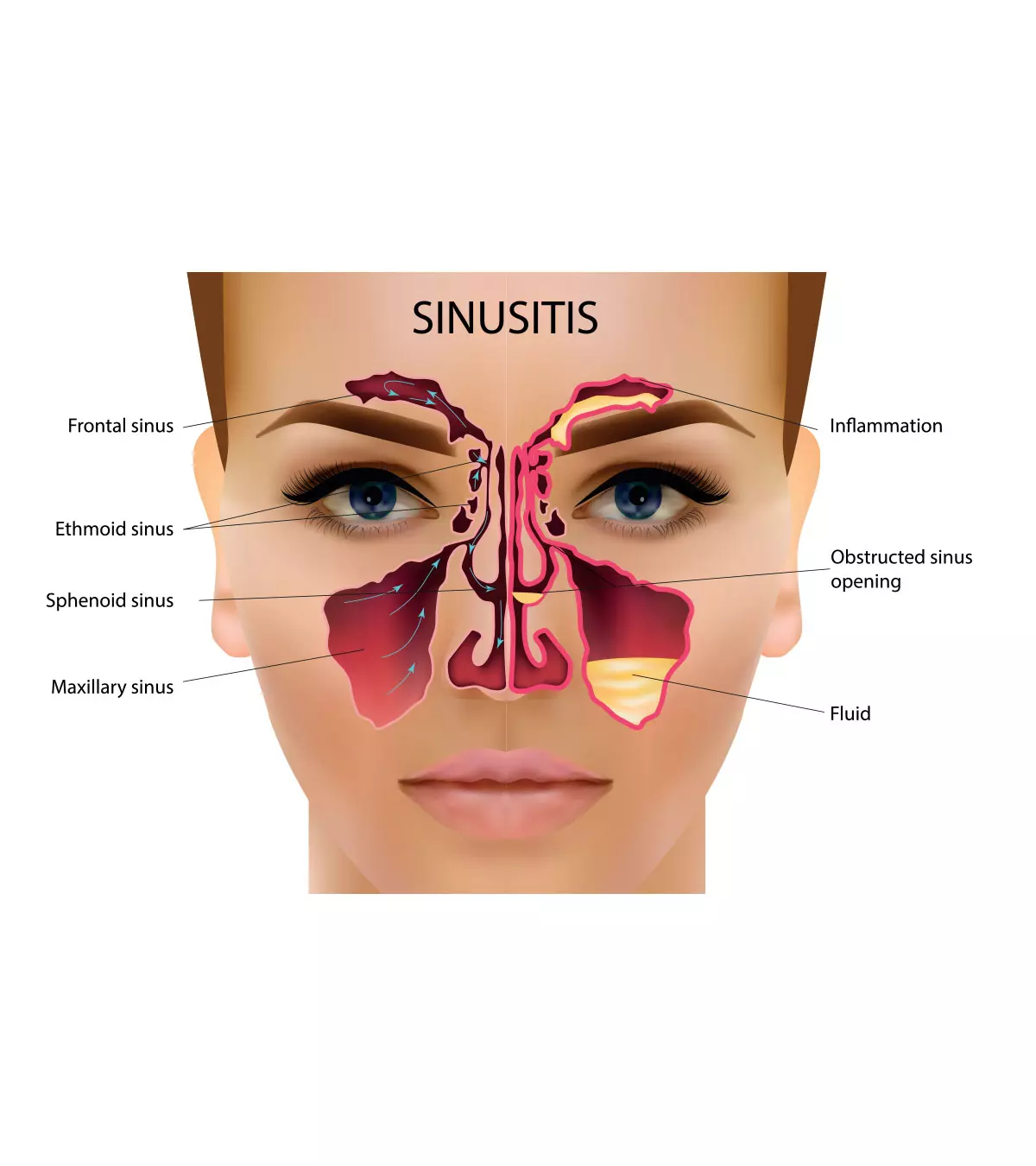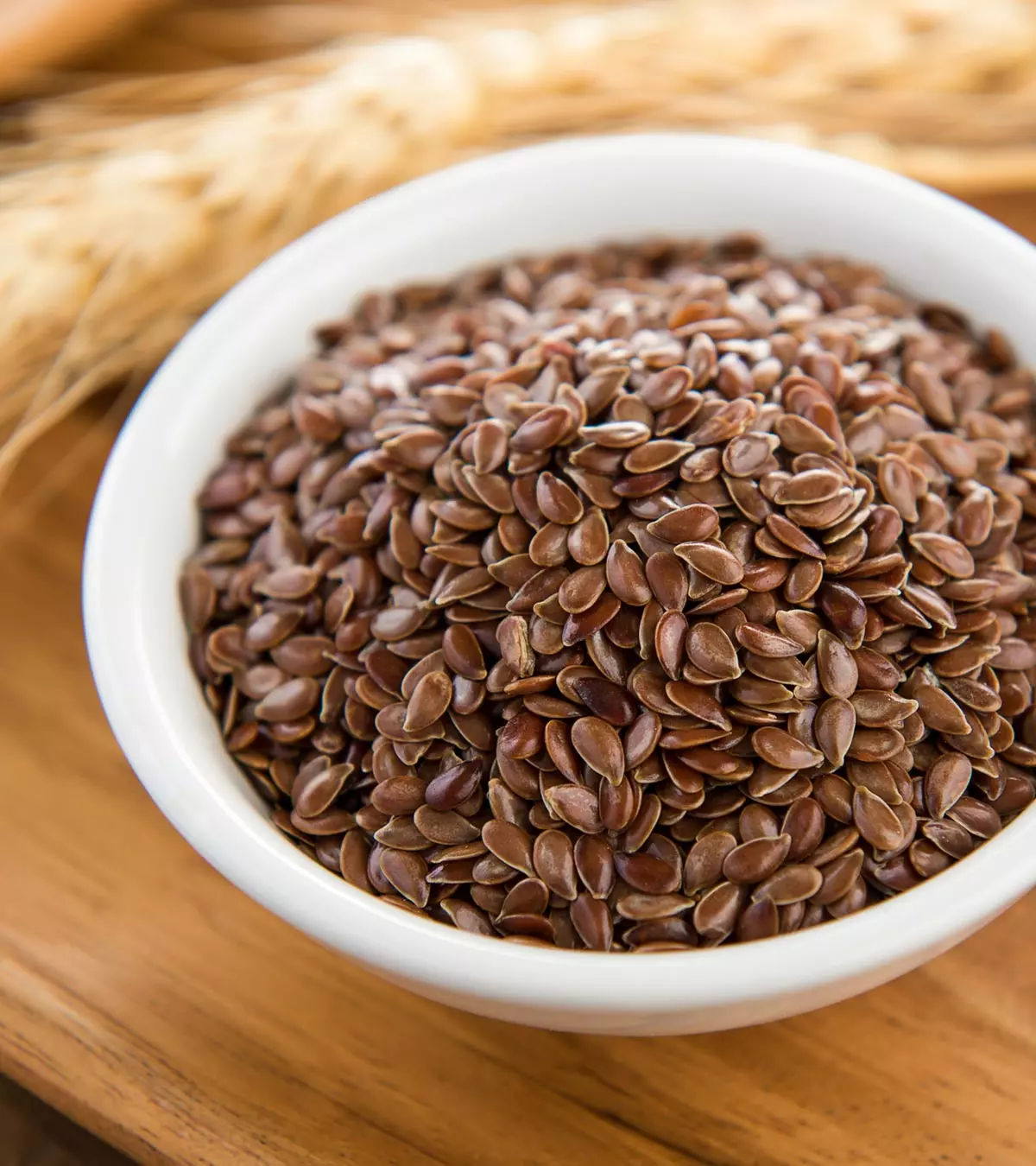
Image: ShutterStock
Salicylic acid is an organic acid that treats skin redness and inflammation. Although the medication works effectively, women worry about the safety of salicylic acid while breastfeeding.
There are chances salicylic acid can pass into breast milk. To avoid the side effects of this medication, you should use it in limited quality and less frequently. However, before using salicylic acid, it is important to consult your doctor to understand its safety.
Read on to know about the safety of salicylic acid in nursing mothers and its health benefits.
Key Pointers
- Salicylic acid is a colorless organic acid popular for its anti-inflammatory effects on the skin.
- It is one of the key components in several skin products that treat conditions such as acne, warts, corns, calluses, and dandruff.
- Salicylic acid can pass into breast milk and cause harm to your infant. Seek medical advice before using it while breastfeeding.
- Eating foods or products containing salicylic acid should be avoided while breastfeeding.
What Is Salicylic Acid?

Image: Shutterstock
Salicylic acid is a colorless organic acid, which belongs to the class of beta hydroxy acids. The acid is similar to acetylsalicylic acid, a prominent compound in aspirin. Salicylic acid is highly effective in minimizing inflammation and redness of the skin, which is why many use it to treat skin conditions like acne, inflammation and other skin problems while breastfeeding. Remember that you need to limit the use of salicylic acid while nursing your baby to ensure her safety.
Health Benefits Of Salicylic Acid While Breastfeeding
Check out some amazing benefits of using salicylic acid while nursing.
1. Minimizes Pain

Image: Shutterstock
Ingredients like aspirin make salicylic acid an effective analgesic. Many foods possess salicylic acid and help relieve pain. Experts recommend that you consume natural plant extracts rich in salicylic acid as an effective remedy to cure pain (1). Although salicylic acid can be beneficial for pain relief, it is crucial to limit its topical application to avoid excessive absorption, which could affect your baby.
 Quick fact
Quick fact2. Treats Acne
Salicylic acid can be used as an effective remedy for treating acne while breastfeeding. The acid helps unclog pores and reduces swelling and inflammation. Several skin lotions, gels, and cleansers contain 0.5% to 2% salicylic acid. You can use the gels on the affected skin while breastfeeding (2). Make sure you don’t use copious amounts; a thin layer would work. Use facial cleansers with the help of cotton balls soaked in warm water.
3. Treats Common Warts
Skin warts are annoying and ugly to boot. Salicylic acid effectively cures common warts (2). Topical ointments that contain it help cure warts of all sizes, ranging from tiny to large ones. Since the acid is keratolytic medication, it easily dissolves the keratin that forms the thick dead skin on the top of the wart and its inner part.
4. Treats Corns And Calluses
Calluses and corns are thick dead skin present under the soles, palms and feet in nursing moms (2). Keratolytic properties of the salicylic acid dissolve the corn and thick layer that covers it. The acid is safe to use topically while breastfeeding (3). You can use drops, applicators, pads, and plasters that contain salicylic acid.
 Caution
Caution5. Treats Dandruff

Image: Shutterstock
Dandruff can be irritating to lactating moms. It is a result of the scalps’ dry skin flaking. Salicylic acid softens the skin and prevents the formation of flakes. You can use dandruff treatment shampoos containing 1.8% to 2 % salicylic acid. Rub the shampoo on the scalp, allow it to soak for some minutes, and then wash your head thoroughly. Soon the itchy, annoying dandruff will disappear (4).
Is Salicylic Acid Safe While Breastfeeding?

Image: Shutterstock
High doses of salicylic acid can be harmful to your newborn, as it can pass into the breast milk. Avoid the oral consumption of foods or products containing the acid. Topical application of the acid to cure skin inflammation and other skin hazards can be safe while breastfeeding. Make sure you use a small amount of the acid once or twice daily when applying it topically. Seek professional advice before you use salicylic acid while lactating. Physicians may recommend alternative treatments for your skin ailments and ensure your dear little angel suffers no harm (2).
 Quick tip
Quick tipFrequently Asked Questions
1. Can I use salicylic acid with retinol while breastfeeding?
Yes, using salicylic acid with retinol while breastfeeding is safe, and it penetrates the skin in negligible amounts (5)
2. Is salicylic acid face wash and mask while breastfeeding safe?
There have been no reports of salicylic acid penetrating the skin and affecting the quality of breast milk. Therefore, salicylic acid products are safe to be used while breastfeeding (6).
3. What should I keep in mind when using salicylic acid while breastfeeding?
Avoid using salicylic acid on broken or irritated skin, and also, refrain from using it on areas that may come into contact with your baby.
Pain, swelling, and acne may be common in lactating mothers. However, you must consult your healthcare provider before resorting to ointments or gels such as salicylic acid while breastfeeding. Using skin care products containing the acid is typically harmless, but avoid consuming products with salicylic acid to prevent it from reaching the baby through your breastmilk. Although it can help relieve pain and treat dandruff and acne, over-application may have negative impacts. Your doctor can suggest the right amount to use during breastfeeding and some safer alternatives.
Infographic: Benefits Of Using Salicylic Acid While Breastfeeding
Salicylic acid is a popular component of many skincare and hair care products and is effective in treating skin conditions. As we list its potential advantages for nursing mothers in this infographic, we also suggest you seek medical advice for the appropriate and safe use of salicylic acid during breastfeeding. Illustration: Momjunction Design Team
Illustration: Health Benefits Of Using Salicylic Acid While Breastfeeding

Image: Dall·E/MomJunction Design Team
References
- Kay H Steen et al.; (1995); Topical acetylsalicylic
salicylic acid and indomethacin suppress pain from experimental tissue acidosis in human skin.
https://pubmed.ncbi.nlm.nih.gov/8657434/ - Salicylic Acid Topical.
https://medlineplus.gov/druginfo/meds/a607072.html - Salicylic Acid.
https://pubmed.ncbi.nlm.nih.gov/29999734/#:~:text=Because%20it%20is%20unlikely%20to - J.J. Leyden et al.; (1987); Effects of sulfur and salicylic acid in a shampoo base in the treatment of dandruff: a double-blind study using corneocyte counts and clinical grading.
https://pubmed.ncbi.nlm.nih.gov/3301220/ - Skin Care, Hair Care and Cosmetic Treatments in Pregnancy and Breastfeeding.
https://www.seslhd.health.nsw.gov.au/sites/default/files/groups/Royal_Hospital_for_Women/Mothersafe/documents/skinhaircareandcosmetictreatmentsapril2021.pdf - Salicylic Acid.
https://www.ncbi.nlm.nih.gov/books/NBK500675/ - The Foods with the Highest Aspirin Content.
https://nutritionfacts.org/blog/the-foods-with-the-highest-aspirin-content/
Community Experiences
Join the conversation and become a part of our nurturing community! Share your stories, experiences, and insights to connect with fellow parents.
Read full bio of Mindy Cockeram
Read full bio of Jessica Albert
Read full bio of Rohit Garoo
Read full bio of Shinta Liz Sunny























